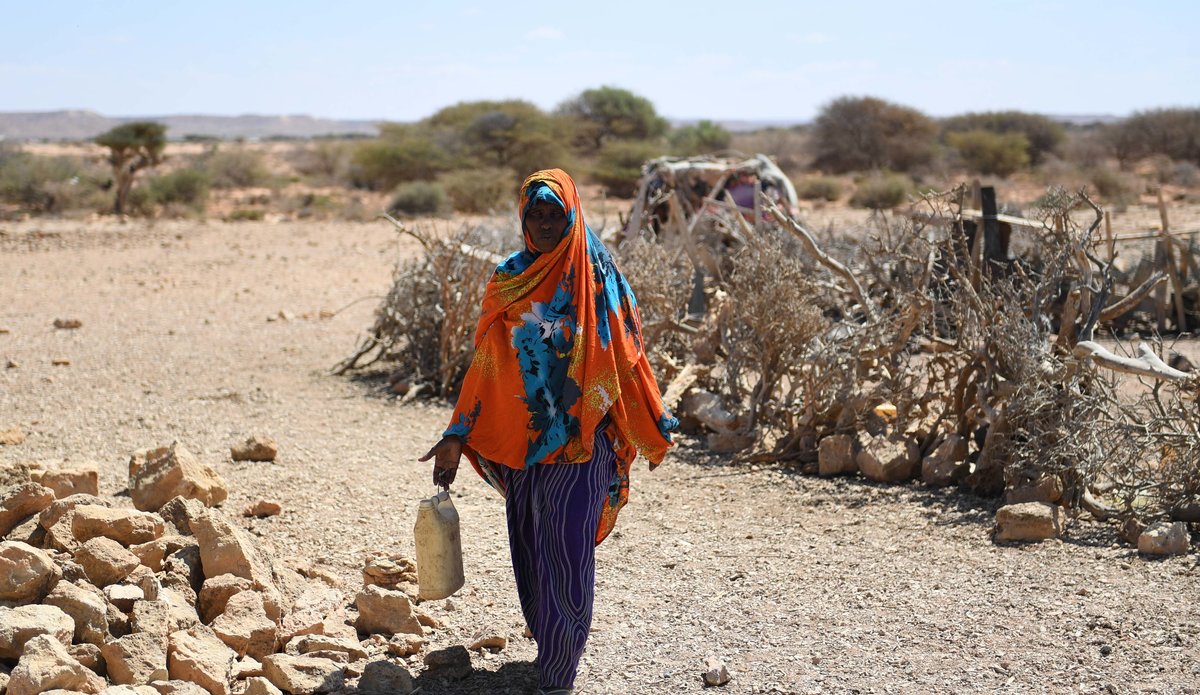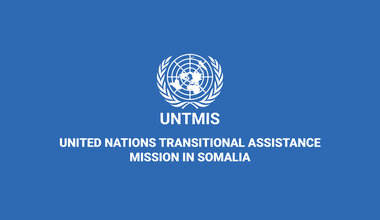Deputy SRSG de Clercq highlights urgent need for drought relief aid in Somalia
The Deputy Special Representative of the UN Secretary-General (SRSG) for Somalia, Peter de Clercq, yesterday completed a three-day fact-finding mission to Somaliland and Puntland in Somalia to highlight the devastating impact of the current drought.
De Clercq, who is also the United Nations Resident Humanitarian Coordinator for Somalia, saw first-hand the effects of drought induced by sparse rainfall, dwindling water resources and poor crop harvests in Somaliland and Puntland.
In a series of meetings with the Presidents of Somaliland and Puntland, senior officials of United Nations agencies, non-governmental organizations (NGOs) and regional drought committees, de Clercq emphasized the need for urgent intervention to save tens of thousands of lives.
“As a total drought response, (we need) $300 million is urgently needed in the first quarter of the year to avert a disaster, to avert going into a pure life-saving mode,” de Clercq said.
If swift action is not taken, he warned that Somalia will experience a famine in 2017. Somalia experienced a devastating famine in 2011, which killed over 250,000 people and ranks as the worst famine of the twenty-first century.
Mr. de Clercq initially travelled on 30 January to Somaliland, where the local drought committee reported 17 recent deaths caused by hunger in the regions of Sanaag, Sarar, Togdher and Haud. The leaders of those regions said more than 10 million animals have starved to death on account of the current drought.
Somaliland Minister of Foreign Affairs Sa’ad Ali Shire appealed to the international community for assistance. He said his government and the local community had raised about $3.5 million in drought relief funding, a sum he described as paltry in view of the magnitude of the current drought.
“There are people out there who need food and water now, today,” said the foreign minister. “Tomorrow is too late. The day after tomorrow does not exist for them.”
Deputy SRSG de Clercq concurred with the minister and urged international donors to respond promptly and generously to the 2017 Humanitarian Response Plan that is seeking $864 million for Somalia.
“It’s clear we are on our way to a famine if very quick action is not taken. Very large numbers of livestock have already died. The livestock that is still there is in very, very bad shape,” noted Mr. de Clercq, who met with Somaliland President Ahmed Mohamed Mohamud Silanyo during his visit to Hargeisa.
Deputy SRSG de Clercq also visited rural areas of Somaliland. Residents of the village of Habaasweyne described the drought as the worst they had seen in three years.
Mr. de Clercq announced that $32m is available from the UN Central Emergency Response Fund and the Somalia Humanitarian Fund to launch a concerted drought response by UN agencies and NGOs across the country.
On January 31 the Deputy SRSG flew to the Puntland capital of Garowe. Mr. de Clercq heard Raage Haji Mohamed, the Executive Director of the Puntland-based NGO Human Initiative, describe the displacement of people and livestock caused by the drought along the Somaliland - Mudug - Puntland corridor.
“You’re dealing with more than 200,000 to 300,000 people and 1.5 million animals that have moved to this valley. They don’t have water, the entire area has no water points,” Mr. Mohamed said.
Puntland President Abdiweli Mohamed Ali Gaas stressed the need for the arrival of drought relief aid before the Gu rain season, which usually occurs between April and June.
Mr. de Clercq assured President Gaas that the UN would work closely with Puntland authorities to expedite the delivery of assistance.
According to the Food Security and Nutrition Analysis Unit and the Famine Early Warning Systems Network, the number of Somalis in need of assistance has risen sharply in recent months, from an estimated five million in September 2016 to over 6.2 million today. The latter figure represents more than half of Somalia’s entire population.
The number of Somalis facing “crisis” and “emergency” conditions has also soared, rising from 1.1 million six months ago to a projected 3 million between February and June of this year. The plight of children is particularly grave: an estimated 363,000 acutely malnourished children are in need of critical nutrition support, including over 71,000 severely malnourished children who require life-saving measures.
 UN
UN





